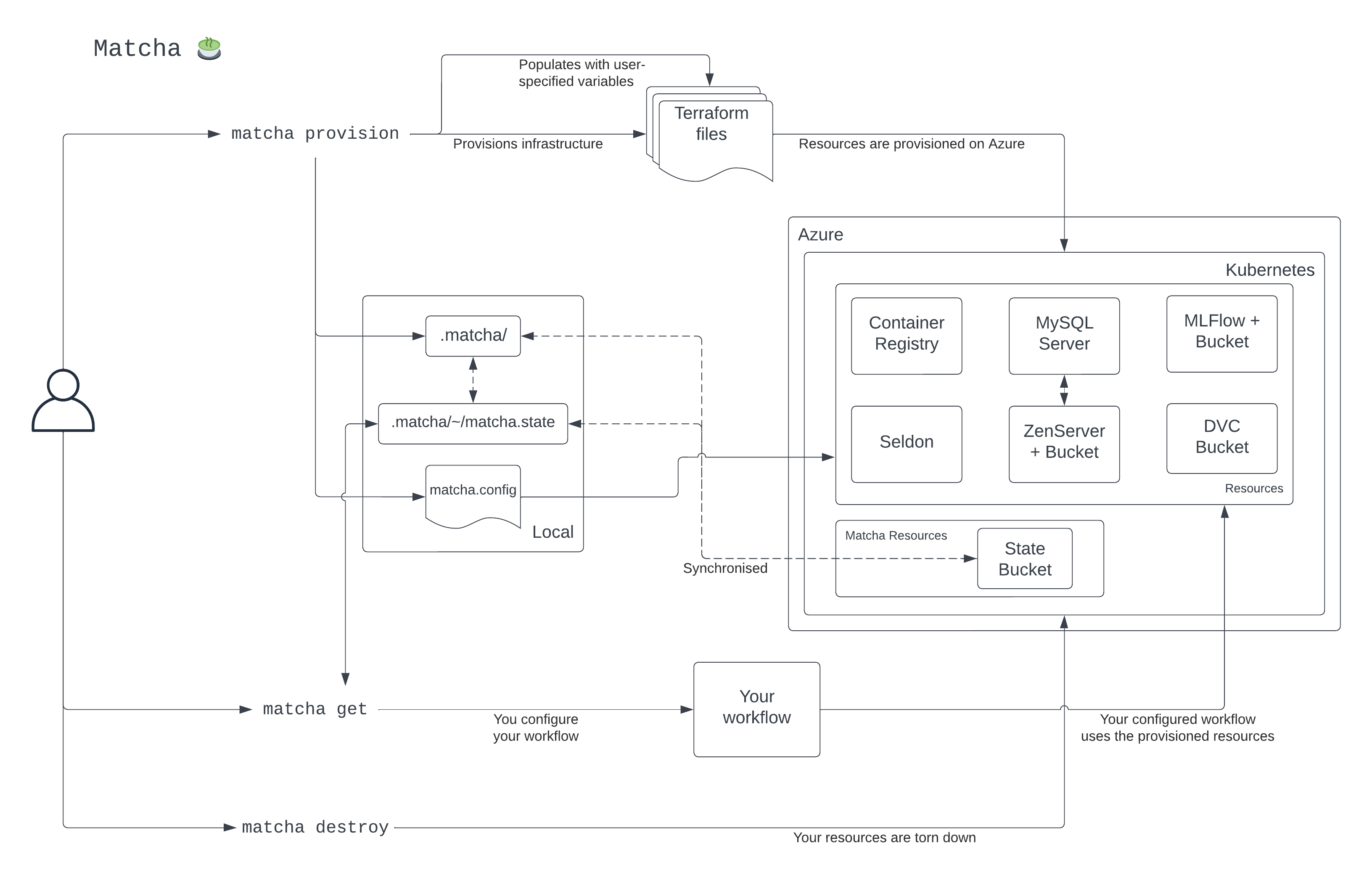 How does Matcha work?
How does Matcha work?
Matcha is a tool that will provision an MLOps environment for you to use. To do that, we make use of various open source tools and libraries. Here, we'll provide a deep dive into how Matcha actually works.
Below is a diagram describing what happens when you use each of the commands implemented by Matcha.
provision
Let's start with provision.
Fundamentally, provision stands up the default infrastructure that we've specified on Azure. This means that the user has to be authenticated with Azure on the command line and their account needs to have the correct level of permissions - see here for a guide on this.
From a user's perspective, they're interacting with Matcha via the typer library - a great tool for designing CLI's.
When provision is run by the user, we take their input (the region and prefix) and populate a set of Terraform files - our hand crafted sensible defaults defined as infrastructure-as-code. Once we have the populated Terraform files, Matcha calls init (via the python-terraform library) to download the information we need from Azure which is used for deploying infrastructure. Immediately after, apply is run which deploys the infrastructure defined in the Terraform files to Azure.
After completing the provisioning process on Azure, the output information of the remote state manager is stored in a matcha.config.json file in the project root directory. Additionally, information about the provisioned resources, along with the populated Terraform files, is stored in a matcha.state file within a .matcha/infrastructure directory.
At this point, users have access to the provisioned resources and can utilize them as needed.
To enable multiple users to use the same set of provisioned resources, the user will need to upload the matcha.config.json file to the project's GitHub repository. This ensures that everyone has access to the up-to-date information regarding Matcha's current state.
get
Through get, the user can fetch information about their provisioned resources. Matcha get interacts with the matcha.state file, which is stored locally and in the cloud. The local matcha.state file will be synchronized with the cloud file to ensure that changes to the provisioned state are reflected in each user's environment.
The user can use get to request information on specific resources or properties by using the built-in arguments, and specify the format in which that information is returned by using the --output option. For more details, run matcha get --help. This enables the user to configure their workflow, for example, by getting the endpoint for their MLFlow experiment tracker.
destroy
Once the user has finished with their provisioned environment, destroy enables them to tear down the resources. It works by calling the destroy Terraform command via the python-terraform library, which interacts with the configured Terraform files in the .matcha/ directory.
You may also notice that an additional resource has appeared in Azure called 'NetworkWatcherRG' (if it wasn't already there). This is a resource that is automatically provisioned by Azure in each region when there is in-coming traffic to a provisioned resource and isn't controlled by Matcha. More information can be found here on how to manage or remove this resource.
